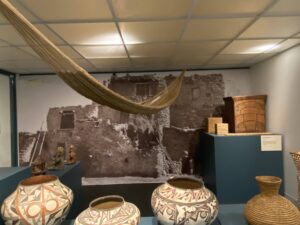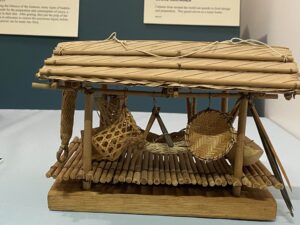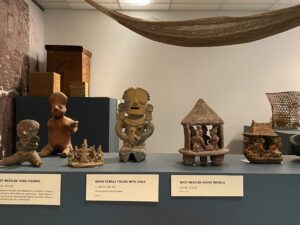Activity 4 – Homelife
What is your house like? Does it have walls? Carpets? Is the roof made of metal, or of banana leaves? Do you cook inside? Is there a bathroom?
Cultures all over the world build shelters to protect themselves from the elements and hold their possessions. These shelters vary widely, however, based on how and where the people who build them live.

The kinds of houses people build, and the things they store in them, can tell us a lot about how they live. People who are nomadic (move from place to place) tend to have few possessions because they have to carry everything with them. Think about it like this – can you fit everything in your room into a backpack to carry with you? Probably not! Nomadic people don’t need big houses, because they do not typically have lots of things to store. They may have structures that they can quickly take down and carry along with them, or they may simply build temporary shelters out of available materials where ever they stop. People who are sedentary (stay in one place) can build complex permanent structures. These structures can hold many possessions, and these possessions can be large, heavy, and fragile because they do not need to be transported from place to place.
In the photo to the right you can see a hammock and some ceramic ollas (water jars). The hammock is from the Kofán culture of Columbia and Equador. This is a nomadic culture and the hammock is light and easily carried. The ollas belonged to sedentary cultures in the American Southwest. They are large, heavy, and breakable.

The environment also has a large impact on what a home looks like. This is because different places pose different problems (heat, cold, rain, etc.) and provide different materials for building. People who live in swampy wet areas, for example, may build houses on stilts to stay above the water, or even build homes on rafts! Where the weather is always warm houses often don’t have walls. You can see this in the Orinoco River house model to the left. This open format allows the breeze to move through and cool people sitting in the shade of the roof. In the Arctic people need good shelter from the cold, and with ice as an available material they build temporary igloos as they move across the landscape. In the American Southwest where rain is infrequent people build more permanent homes out of adobe mud brick. Wabanaki people traditionally lived in wigwams made of birchbark.

These are many of the reasons anthropologists are interested in the kinds of houses cultures build for themselves. Houses can help us understand how cultures have adapted to their environment, how they use the resources available to them, and how they live on the landscape. Houses can also tell us a lot about how the people of the culture organize their families. Do houses contain only parents and children? Extended family like grandparents, aunts and uncles? Do the women live in one house and the men in another? So much can be learned from how and with whom we choose to shelter!
So what does your house say about you? Do you live in an apartment, to reduce space and increase how many people live in the city? Is it a farm outside the city, where there’s a lot more room to spread out? Who lives with you? Your house can tell you so much about where you live!
Activity Time
Time to design your own house! Flip to the Housing page in your Research Notes. Now think of an environment, any environment! It could be a forest, a desert, on the moon, under a bridge, anywhere! Design a house to match—what’s dangerous about living there, or uncomfortable? What does your house need to do for you?
